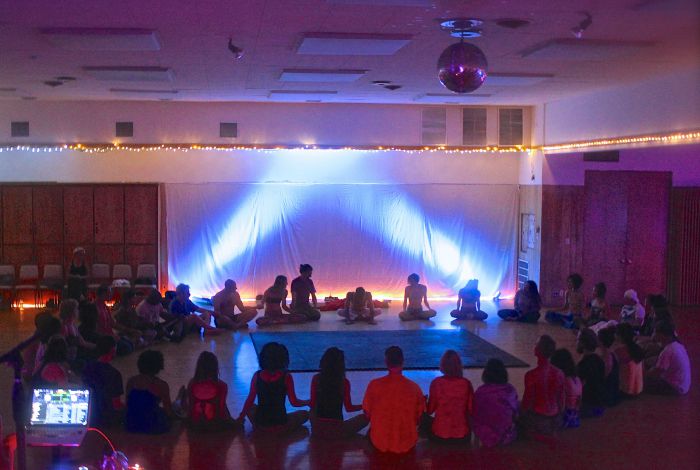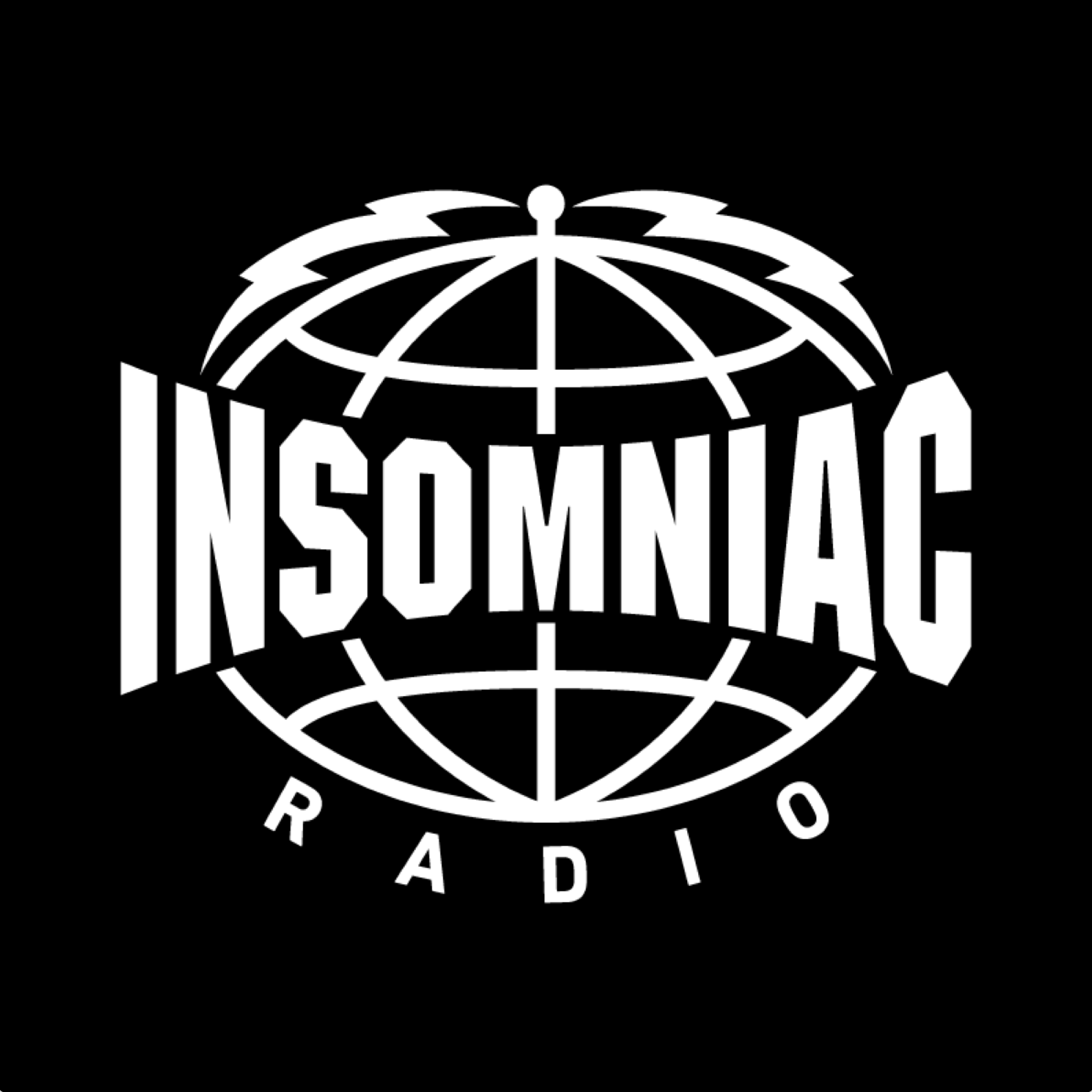The Dance Party for People Who Don’t Like Nightclubs
A confession: I do not really enjoy nightclubs.
Yes, I’ve definitely had fun in a few clubs throughout the years (shout out to Exchange, Treehouse, Output, etc.), but in general, I am relatively old and not so much into the crowds, the overpriced drinks, or having to scream over the music in order to have a conversation. Having a conversation in a nightclub is like trying to hug a live salmon. Impossible.

The thing is, I really like to dance. Obviously, festivals are an ideal format for people like me, but festivals happen infrequently, and usually when I’m at a festival I’m working, not dancing.
There is, however, another option for those of us who love shaking our asses as much as we love a good night’s sleep: ecstatic dance. Referred to as a “conscious dance modality,” ecstatic dance is a sort of hippie-fied dance party where the focus is less on bottle service and more on personal transformation. Events are drug- and alcohol-free zones that end in time for an early dinner. Talking on the dancefloor is discouraged, and everyone in attendance really, truly, dances like no one is watching.
On a recent Sunday afternoon, I drove to a meeting hall in West L.A. to take part in Ecstatic Dance L.A., one of the city’s ongoing ecstatic dance events. (Ticket prices range from $15-$20.) Inside the dark, large room, altars decorated with various crystals and tarot cards were set up on both sides of the dancefloor. Most everyone in attendance was wearing yoga clothes and looked like the super healthy types typically spotted perusing the supplements aisle at Whole Foods. The event began with all of us sitting in a circle, where a talking stick was passed around so we could each declare our intentions for the impending dance session. These ranged from clearing energetic blockages to achieving a new sense of emotional freedom to simply shaking it until sweaty and satisfied.
Then, we all got up and proceeded to dance. For hours.

Although not explicitly religious, ecstatic dance is designed so that participants achieve a spiritual boost by getting down in an environment designed to be free of controlled substances and unwanted advances. In short, it is purely about the dancing.
Of course, the connection between dancing and spirituality is nothing new. Dances like Sufi whirling and the Native American ghost dance are ancient, and millions of people throughout history will tell you that the closest they’ve ever felt to God was while on a dancefloor. Many of the hundreds of thousands of people who have danced at kineticFIELD, circuitGROUNDS or most any festival where dancing happens will report that those experiences were similarly sacred.
“There is an inherently spiritual aspect to the ecstatic dance practice,” says Atasiea Ferguson, who founded Ecstatic Dance L.A. and led the day’s session. “The practice of no talking on the dancefloor… or around the altars intended for prayer, meditation, divination and relaxation, creates a sacred atmosphere in the space.” The fact that these events are intentionally designed with the spiritual tip in mind connects them to so-called transformational festivals like Lightning in a Bottle, Lucidity and Symbiosis, and organizers find that there is also an overlap in audiences.
“There’s lots of crossover between [ecstatic dance] and the festival world, because ecstatic dance is the closest thing to a festival happening in the city on a regular basis,” says Ferguson, who notes that the ecstatic dance community is composed primarily of DJs and producers, spiritual and health-conscious individuals, people in recovery, dance enthusiasts, and practitioners of yoga and other various “conscious dance modalities” such as 5Rhythms, Soul Motion, Contact Improv, Dancing Freedom and YogaTranceDance.
Ecstatic dance events happen around the world, and Ferguson himself discovered the practice while living in Oakland, California. When he moved to Los Angeles, he founded Ecstatic Dance L.A. with his business partner, Robin Parrish. The event happens in the city’s Westwood neighborhood on the first and third Sunday of every month and features a rotating lineup of DJs including Sol Rising, who provided the soundtrack on the day I attended. Impressively diverse, the mix included house, big room, trance, tribal, hip-hop, drum & bass, dubstep, and a truly outstanding remix of Bruno Mars’ “Uptown Funk.”
I danced until I was dripping with sweat, and I don’t sweat that easily. I didn’t once feel self-conscious about my moves. Throughout the course of the afternoon, the space filled up with a crowd that included both children and white-haired folks. On the side of the room, bowls of lentil soup were available for a donation. When the music got more relaxed at the end of the session, a group of people formed a cuddle puddle in the center of the dancefloor. We had been dancing for four hours.
Altogether, Ferguson calls the practice “recreational, cathartic, and one that can be equally celebratory and deeply transformative.”
Did I in fact feel spiritually invigorated in the end? Totally. It was the same sort of exhilarated emotional high you get while attending a music festival, but which often fades a few days after re-entering the real world. On the drive home, I felt like I was floating, and I was in bed by 10pm that night. My muscles ached for days afterward, and my mood was elevated for longer than that. I’ll definitely be back.
Follow Ecstatic Dance L.A. on Facebook | Twitter

